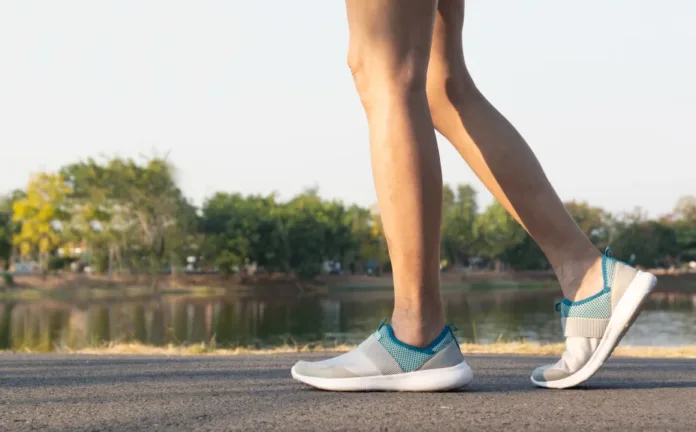Alternating fast and slow walking boosts fitness, burns fat, and may lower blood pressure
If lifting weights or holding planks doesn’t appeal, a new fitness craze sweeping TikTok might. Called Japanese interval walking, it’s a simple yet scientifically backed method that alternates between three minutes of brisk walking and three minutes of slow strolling — repeated for about 30 minutes.
The technique is straightforward but specific. According to Dr Kristian Karstoft, associate professor at the University of Copenhagen, the “fast” segments should be intense enough that speaking in full sentences is difficult. The “slow” intervals should be slow enough for real recovery — something many people find surprisingly challenging.
Karstoft, who has studied the method, says it’s especially suited to people prone to running injuries, as walking is gentler on the joints, as well as middle-aged or older adults who don’t do much regular exercise. Those already very fit may need to jog or run their intervals for similar benefits.
This walking pattern resembles high-intensity interval training (HIIT), where short bursts of effort are followed by easier recovery periods. Dr Shaun Phillips, a senior lecturer in sport and exercise physiology at the University of Edinburgh, explains that HIIT-style approaches can deliver the benefits of moderate exercise in less time, with a stronger stimulus for the body to adapt.
A Proven Japanese Origin
While it’s now trending on social media, Japanese scientists have been studying the approach for over 20 years. One large Japanese study tracked 139 healthy participants with an average age of 63. Those who did high-intensity interval walking at least four days a week for five months significantly boosted their peak aerobic capacity — a key measure of fitness — compared with people doing continuous moderate walking or no structured exercise.
The results were striking: interval walkers improved not just fitness, but also reduced blood pressure and increased knee joint strength.
Benefits Beyond Fitness
Karstoft’s own small randomised trial found that people with type 2 diabetes improved their blood sugar control through interval walking. Over four months, participants saw more gains than those doing continuous walking, despite burning the same total calories.
“Typically with interval walking, we’ve seen a gain in fitness level of around 15% to 20% compared to trivial or no improvements in continuous walkers,” Karstoft says. Participants also lost an average of three to five kilograms of body fat over four to six months.
A review published last year by Karstoft and colleagues concluded that Japanese interval walking is both feasible and highly effective for older, frailer adults. It improves fitness, muscle strength, and several health markers, even in people starting from low activity levels.
Getting Started
For beginners, experts recommend starting with normal walking until it feels comfortable, then gradually introducing the fast/slow intervals. The “fast” pace doesn’t have to be a sprint — just enough to raise your heart rate and make talking harder. The “slow” pace should feel easy enough to fully recover before the next push.
Like all exercise, it’s not for everyone. Some enjoy the challenge of alternating speeds, while others find it frustrating. “We’re never going to have one ideal exercise protocol that everyone loves,” Phillips says. “The goal is to offer many effective options so people can choose what works for them.”
Still, for those looking for a low-impact, time-efficient way to boost health without setting foot in a gym, the Japanese interval walking method offers a proven, accessible option — and you don’t need special equipment, just a decent pair of shoes and half an hour.
